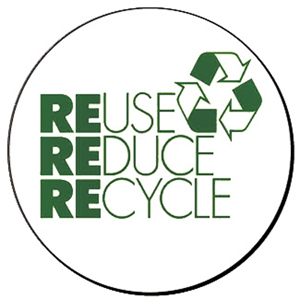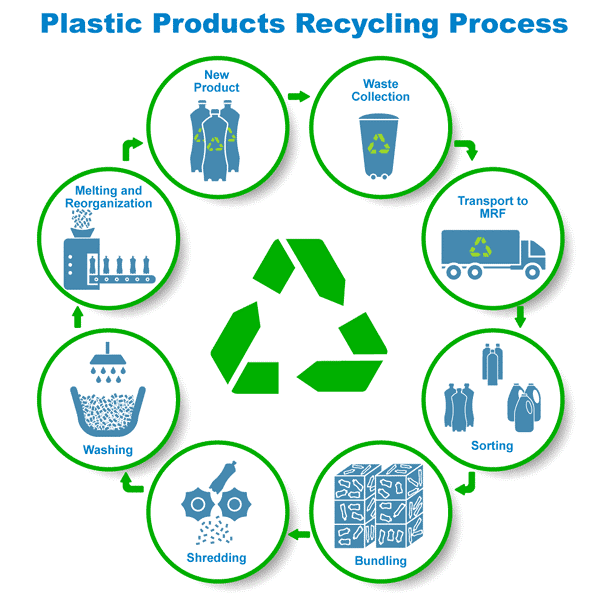Recognizing the Category and Handling of Different Kinds of Waste
Efficient waste monitoring is critical for ecological sustainability, needing a detailed understanding of the category and handling of different waste types. House waste, industrial spin-offs, harmful materials, electronic refuse, and organic residues each demand distinct procedures to guarantee safety and security and lessen environmental damage.

Family Waste
Household waste, encompassing a wide variety of disposed of products produced from daily living tasks, represents a considerable component of the total waste stream - recycling lives services. This category consists of organic waste such as food scraps, yard trimmings, and paper products, along with inorganic products like plastics, metals, and glass. The varied nature of home waste requires efficient classification and monitoring to mitigate environmental influence and advertise lasting living techniques
Efficient house waste administration starts with segregation at the source, assisting in recycling, composting, and secure disposal. Organic waste, for example, can be composted to generate nutrient-rich dirt changes, decreasing garbage dump concern and boosting dirt health and wellness. Recyclable materials, consisting of paper, glass, and specific plastics, can be processed and repurposed, reducing and conserving sources energy consumption related to brand-new product manufacturing.
Furthermore, unsafe household waste such as batteries, electronic devices, and cleaning chemicals needs specialized handling to stop dirt and water contamination. Public recognition campaigns and hassle-free disposal alternatives play essential duties in making sure correct disposal and recycling of these products. By carrying out robust waste decrease methods and promoting area involvement, districts can substantially relieve the ecological impact of family waste.
Hazardous Waste
Industrial waste, a significant contributor to global waste generation, incorporates a diverse variety of materials generated by manufacturing, building and construction, and various other industrial tasks. Effective management of commercial waste is important for minimizing ecological influence and promoting sustainable practices.
The handling of commercial waste generally involves numerous procedures: collection, disposal, segregation, and therapy. Collection systems are created to effectively collect waste products from various sources within a commercial procedure.
Taking on techniques such as waste reduction, resource recuperation, and recycling can dramatically reduce the burden of industrial waste on the environment, contributing to more lasting industrial methods.
Hazardous Waste

The classification of contaminated materials is typically based upon its chemical and physical attributes. Toxic wastes consist of harmful materials that can cause damaging wellness effects also at reduced focus. Corrosive wastes can harm or damage living tissues and products. Combustible wastes can quickly ignite, posturing fire risks, while responsive wastes can create explosions or launch poisonous gases upon call with various other materials.
Effective contaminated materials management involves a number of crucial techniques: recognition and partition of unsafe materials, safe transport and storage, and proper treatment and disposal. Treatment methods may include chemical incineration, neutralization, and stabilization. Governing compliance is vital, assisted by structures such as the Resource Conservation and Healing Act (RCRA) in the USA, which guarantees risk-free and eco sound management of harmful waste.
Digital Waste
Electronic find more information waste, commonly abbreviated as e-waste, stands for an expanding obstacle in waste administration because of the fast obsolescence of innovation. This category encompasses a wide array of thrown out digital gadgets, including smart devices, computer systems, televisions, and house devices. The complexity of e-waste hinges on its composition; these things have a blend of valuable products such as gold and copper, along with dangerous substances like cadmium, lead, and mercury.

Regulations and laws, such as the European Union's Waste Electric and Digital Tools (WEEE) Regulation, purpose to promote responsible e-waste management. These policies mandate manufacturers to assist in the collection and recycling of digital products, thus reducing the concern on land fills and reducing environmental contamination.
Organic Waste
Organic waste, encompassing eco-friendly products such as food scraps, yard trimmings, and agricultural deposits, constitutes a considerable part of the community solid waste stream. This kind of waste is significant not only for its volume however additionally for its prospective environmental influence otherwise handled properly. Organic waste can break down anaerobically in land fills, producing methane, a potent greenhouse gas adding to climate adjustment.
Appropriate handling of natural waste entails numerous strategies. Furthermore, drawing away food waste from land fills through donation programs can relieve food insecurity while reducing waste.
Municipalities and organizations are increasingly acknowledging the relevance of natural waste monitoring. Carrying out thorough natural waste reusing programs not just mitigates environmental impacts however additionally lines up with wider sustainability objectives, advertising a round economic situation where sources are continually reused and repurposed.
Final Thought
Efficient waste administration and ecological security require a detailed understanding of the category and handling of different waste types. Home, industrial, hazardous, electronic, and natural waste each call for unique procedures for disposal, treatment, and segregation. Proper monitoring decreases ecological impact, conserves sources, and promotes sustainability. Executing appropriate methods for each and every waste type guarantees safe and liable waste monitoring methods, eventually adding to the security of ecological communities and public health and wellness.
Reliable waste administration is crucial for environmental sustainability, needing a comprehensive understanding of the classification and handling of numerous waste types.Household waste, incorporating a wide selection of disposed of materials generated from day-to-day living tasks, represents site here a significant element of the total waste stream.Industrial waste, a major contributor to worldwide waste generation, incorporates a varied variety of products generated by production, building and construction, and other commercial activities (recycling lives services).Unsafe waste, a vital worry in waste management, consists of products that posture considerable dangers to human health and the atmosphere due to their harmful, harsh, combustible, or responsive properties.Organic waste, incorporating naturally degradable products such as food scraps, backyard trimmings, and agricultural residues, constitutes a considerable part of the local solid waste stream